by Nadia Egan // Feb. 9, 2024
In 1964, Donald Judd wrote the essay ‘Specific Objects,’ a key text in the development of Minimalist art theory. In his essay, Judd articulated his ideas on art and objects, advocating for a shift away from traditional forms of artistic expression. He emphasized the importance of the physical presence and materiality of art objects, rejecting representational and symbolic content. He introduced the term “specific objects” to describe artworks that exist as self-contained entities, challenging the conventional boundaries between painting and sculpture. He argued for an art that was devoid of narrative or illusionistic elements, aiming for a direct and immediate experience for the viewer.
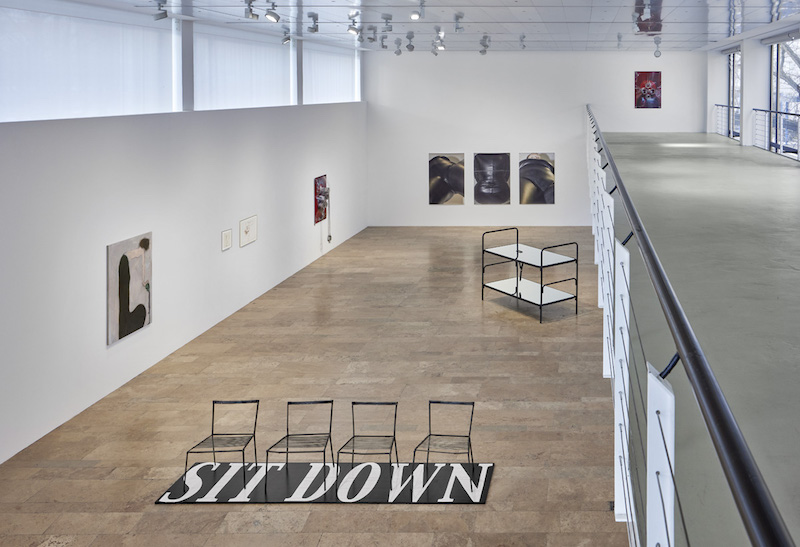
‘Non-Specific-Objects,’ 2024, installation view, Capitain Petzel, Berlin // Courtesy of the artists and Capitain Petzel, photo by Gunter Lepkowski
In the essay, Judd underscored the concept of embodied subjectivity, aspiring to be comprehensive but falling short in allowing space for gender, racial and/or sexual differences in art. Recognizing this limitation as a point of departure, the curators of ‘Non-Specific Objects’ at Capitain Petzel selected artists whose work actively counters the supremacy of universal concepts, promoted by Judd. Through abstraction and references to bodies, both literal and metaphorical, these artists carve out space within their works to embrace and highlight the nuances of difference.
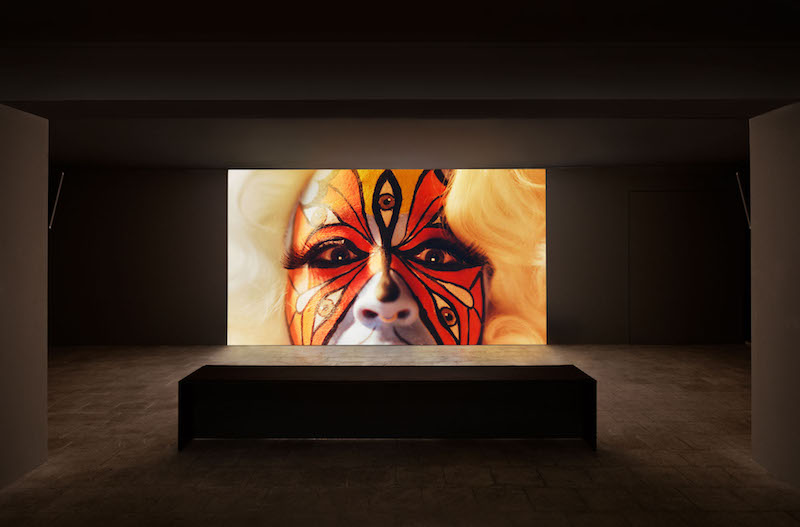
‘Non-Specific-Objects,’ 2024, installation view, Capitain Petzel, Berlin // Courtesy of the artists and Capitain Petzel, photo by Moser
One of the most notable pieces featured in the exhibition is ‘Dreaming the End’ (2023), a 21-minute video by the non-binary artist Sin Wai Kin, which serves as an intimate exploration of the artist’s personal experiences with binary categorizations. I was, coincidentally, present for the premiere of the work in Rome, and it seemed truly fitting to rediscover it within the context of this exhibition. Sin’s work, particularly in this piece, actively challenges the hegemonic universal, namely as their characters navigate between gender binaries, occupying spaces at both ends of the spectrum and the places in between. In ‘Dreaming the End,’ Sin flaunts an array of costumes, ranging from sophisticated three-piece suits to extravagant ball gowns. Through these transformations, the artist embodies a diverse cast of characters that spans the (stereotypical) gender spectrum, establishing a space that not only celebrates but actively embraces diversity and difference.
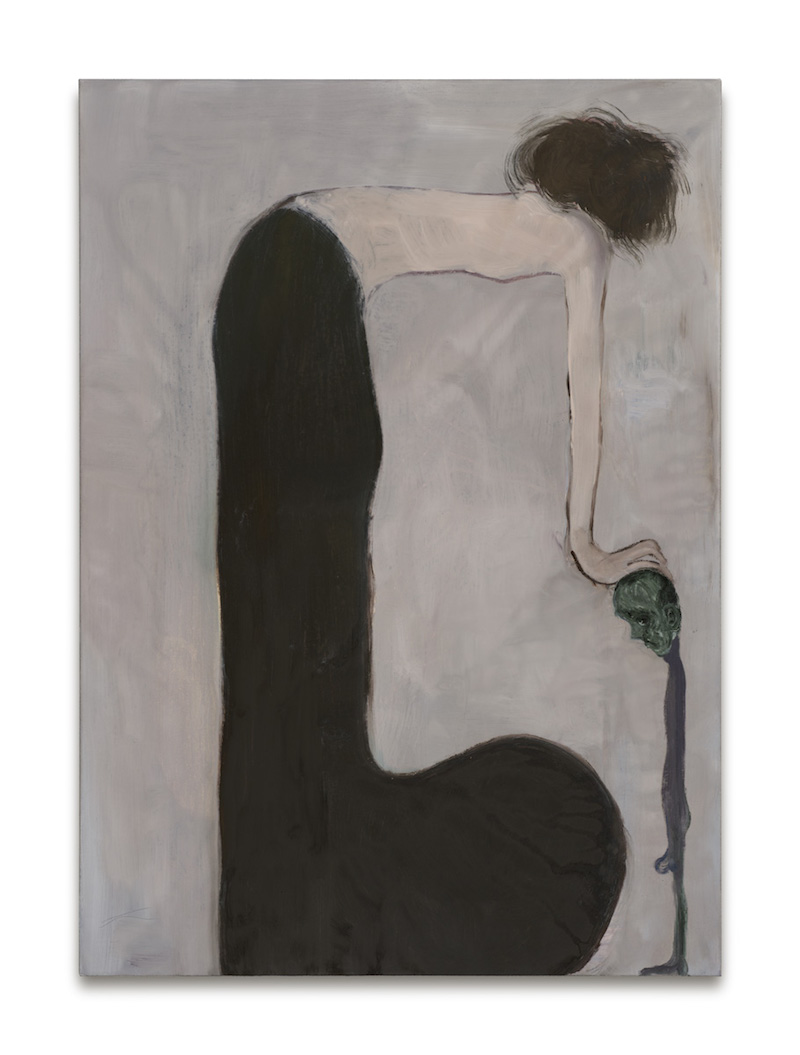
Sanya Kantarovsky: ‘Booted,’ 2024, oil on linen, 139.7 x 99.1 cm // Courtesy of the artist and Capitain Petzel, Berlin
Another artwork from the exhibition that lingered with me is Sanya Kantarovsky’s ‘Booted’ (2024)—a painting of a woman doubled over, her legs and feet forming a colossal boot, while she supports herself using a diminutive male figure, leaning on him like a walking stick. The figures exhibit striking disproportion and a slightly grotesque quality in their portrayal, resembling the distinctive style of an Egon Schiele work. Described as capturing the “power of dynamics,” the painting introduces an ambiguity, leaving us to question whether the depicted scene conveys tenderness or oppression. The obscured face of the female figure adds to the enigma, while the emotional expression of the male figure remains uncertain, oscillating between melancholy or anguish. The dynamic of the woman heavy-handedly positioned above the man, along with their exaggerated and almost inconceivable bodily proportions, distinguishes these figures from prevailing established norms and, albeit exaggeratedly, recognizes the existence of these inversions of stereotypical gender expectations.
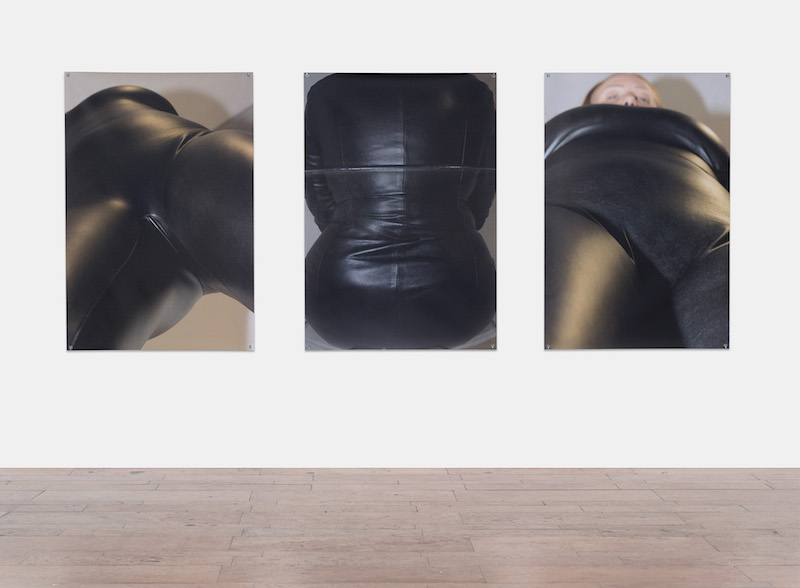
Kristina Nagel: ‘Thread I-III,’ 2024, print on PVC, hook screws, 165 x 111.3 cm // Courtesy of the artist and Capitain Petzel, Berlin
For a considerable duration, the leather community has lingered on the outskirts of society. Despite prevailing stereotypes, its core tenets of safety, consent, communication and respect have consistently defined its dedication to inclusivity, welcoming individuals across all gender and sexual spectrums. Kristina Nagel’s triptych, ‘THREAD I-III’ (2024), taps into this by featuring a female figure adorned in snug leather attire. Nagel’s photography often employs a candid and forthright approach in the portrayal of the human form, with images taken from unorthodox or direct perspectives. In ‘THREAD I,’ the femme model is captured from just below her crotch, the camera panning upward as she peers over her breasts into the lens, the folds and curves of her body accentuated by the tight leather, perceived potentially as an unflattering angle. However, Nagel transforms this perspective into something alluring, unapologetically celebrating the authentic and diverse realities of women’s bodies.
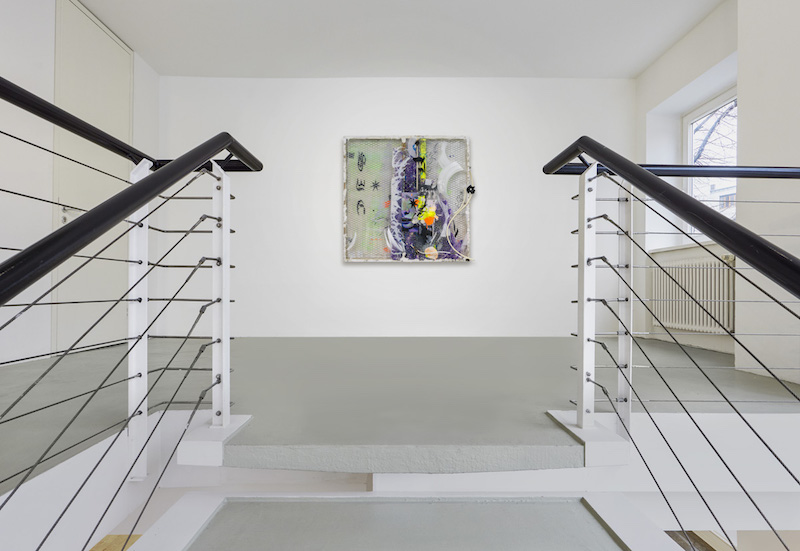
‘Non-Specific-Objects,’ 2024, installation view, Capitain Petzel, Berlin // Courtesy of the artists and Capitain Petzel, photo by Gunter Lepkowski
If the intention of the exhibition was to challenge Donald Judd’s notion of art devoid of narrative or illusionistic elements, or art stripped of the chance of diversity, it unequivocally succeeded. While the human body might not be overtly addressed in other works—such as Jack O’Brien’s ‘Passage’ (2023), an erotically-charged sculpture crafted from ambiguous materials, underscored by an aesthetic that delves into the political histories of capitalism and the generation of desire, or David Douard’s ‘BirdZhandzand US’ (2023), a multimedia sculpture comprising fragments of text and materials sourced from the internet, symbolizing the excesses of late capitalism—the context of these artworks compels visitors to engage with their deeper meanings, challenging us to contemplate beyond the surface and against the privileging of immediacy advocated by Judd.
Exhibition Info
Capitain Petzel
Group Show: ‘Non-Specific Objects’
Exhibition: Jan. 20–Feb. 24, 2024
capitainpetzel.de
Karl-Marx-Allee 45, 10178 Berlin, click here for map


























